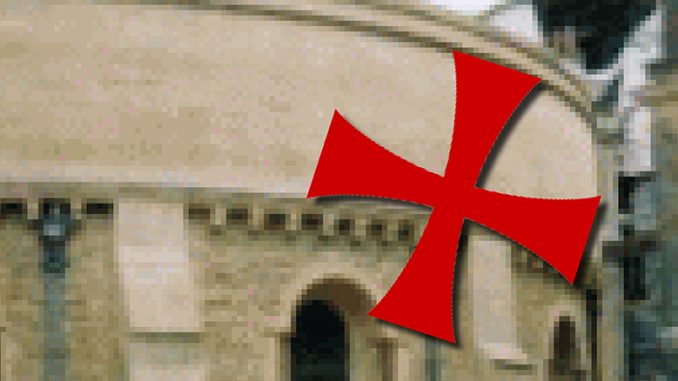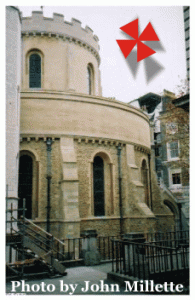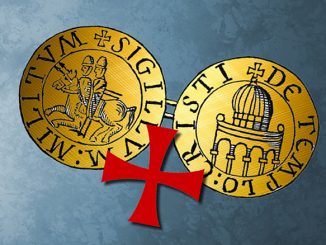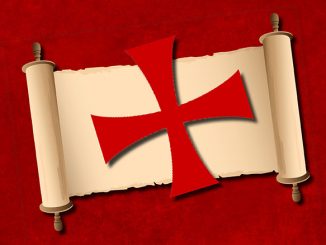

Left: The restored Templar Round Church in London.
In 335 AD, St. Helena, Emperor Constantine’s mother, discovered the Sacred Cave where Jesus Christ was buried after His crucifixion on Golgotha. Interestingly, this site was previously a temple dedicated to the goddess Venus. Emperor Constantine then built a church known as “Anastasis” or the Church of the Resurrection. This church, like the Templar Round Church in London, is also round and includes the Sacred Cave and Golgotha.
For Christian believers, this spot is the most sacred place on earth. It held immense significance for the knights who captured the Holy City during the First Crusade in 1099 AD, predating the establishment of the Templars in 1118 AD.
The Templars’ primary duty was to protect Christians and the sacred sites they journeyed to in the Levant. It comes as no surprise that the Templars sought to replicate the shape and form of this holy structure in their own churches throughout medieval Europe.
The Temple Church in London, situated in the heart of the legal district, is a prime example. Consecrated in honor of the Blessed Virgin Mary on February 10th, 1185, it stood as a tribute to the original Templars who were inspired by the church in Jerusalem.
Initially, the Templar community in London was located in the High Holborn district. However, their expansion at the end of the 12th century necessitated a move to larger premises, reflecting the Order’s rapid growth and popularity in Christendom.
During the consecration of the Temple Church, notable figures such as Heraclius, Patriarch of Jerusalem, and King Henry II were present. Heraclius, considered by some as the most corrupt priest in history, was chosen over William of Tyre, a prominent Templar chronicler, possibly due to political maneuvering. King Henry II and his son, Richard I (The Lionheart), staunchly supported the Templars.
The effigies of many Templar patrons, including Sir William Marshal, the Earl of Pembroke, can be found within the Round Church. Sir William Marshal, revered as the epitome of chivalry, played a significant role during the negotiations of the Magna Carta in 1215.
Over time, the Templars’ popularity declined, and they permanently left the Holy Land after the fall of Acre. The London Temple then fell under the control of Edward II and later the Knights Hospitaller, who had worked closely with the Templars in the Holy Land.
Meanwhile, the lawyers of London sought a facility near the Royal Courts at Westminster. The Hospitallers gladly rented out the Temple Church to two groups of lawyers, known as the Inner and Middle Temples. They shared the original Round Church, which became the college chapel for both groups. To this day, the phrase “passing the bar” originated from the lawyers’ need to cross the Temple Bar section.
In 1540, Henry VIII dissolved the Hospitallers and took control of the church. He appointed a priest called the Master of the Temple, a title still in use today. The present Master, The Reverend Robin Griffith-Jones, oversees religious observances and authored the book “The Four Witnesses: The Rebel, the Rabbi, the Chronicler, and the Mystic.”
Throughout its history, the Temple Church witnessed conflicts and controversies. After London’s great fire in 1666, Sir Christopher Wren led the restoration, during which an organ debate between the Inner and Middle Temples caused division. The church suffered severe damage during World War II from Nazi air raids, but restoration work was completed by 1951, preserving the original Round Church as a remarkable Templar landmark and tourist attraction.
Like the Templars themselves, the Round Church has endured numerous challenges and transformations. Today, it stands as a testament to the architectural marvel of the Templars, defying the odds for over 800 years.
About Us
TemplarHistory.com was started in the fall of 1997 by Stephen Dafoe, a Canadian author who has written several books on the Templars and related subjects.
Read more from our Templar History Archives – Templar History



